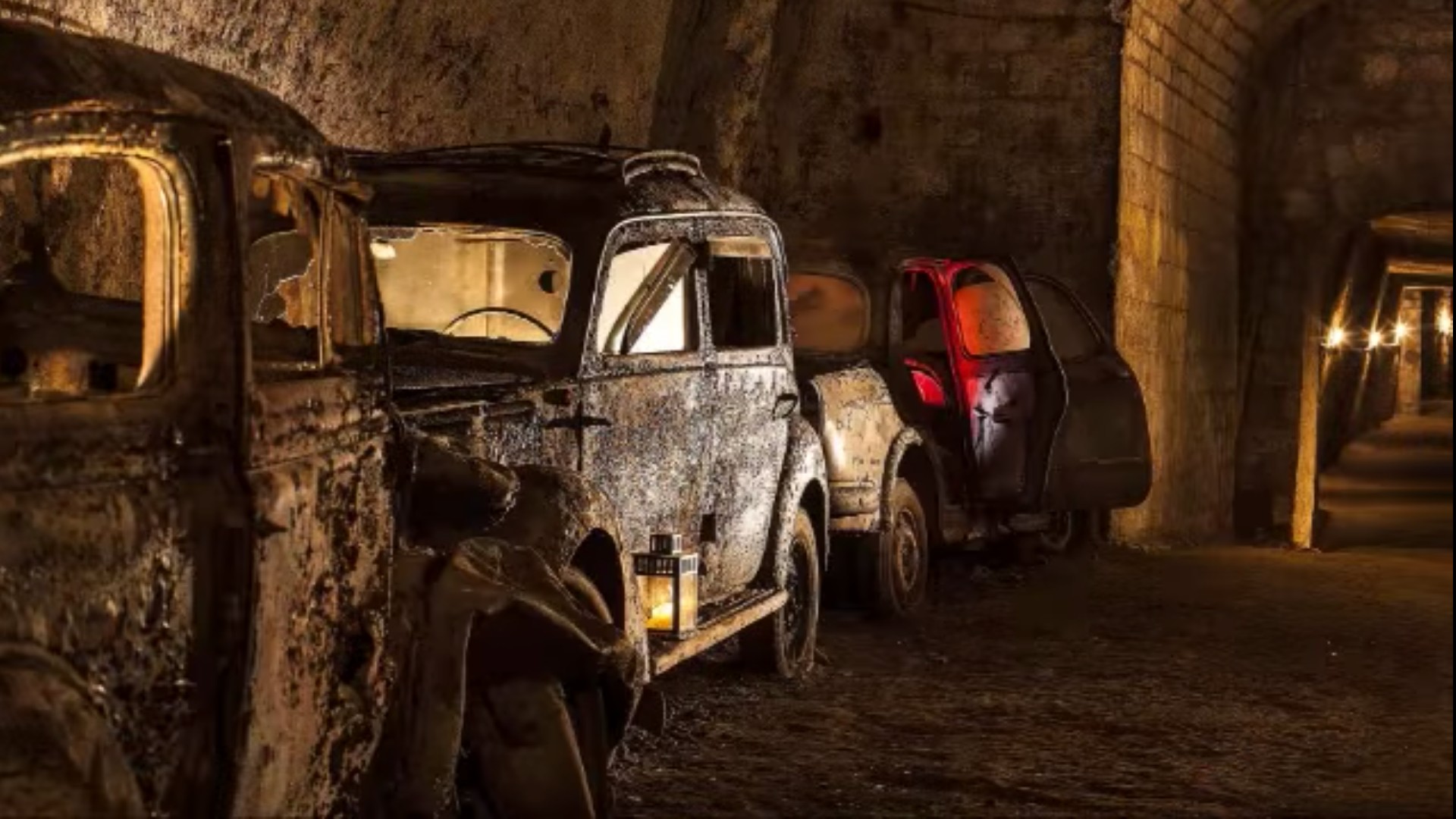

There is something evocatively beautiful about an old, rusted car. In your mind’s eye, you can see the majesty they once were. And perhaps in some cases, with a few patches to cover where holes now gape, they could return to their original glory. For others, the dilapidation becomes part of the tableau, tall weeds defying usual patterns by growing up and through man-made machinery. In the center of Naples, Italy, that scene comes to life with abandoned 1940s vehicles and motorcycles lining a tunnel more than 30 yards below your feet.
Piazza del Plebiscito was named after a vote in October of 1860 that decreed the annexation of the kingdom of the Two Sicilies, which ruled all of southern Italy. The country was then united to become the Kingdom of Italy, and the royal palace was built on one side of the plaza. On the other, the church of San Francesco di Paola stands regally, watching over tourists walking or cycling through.
Under this plaza lies the Bourbon Tunnel, which was commissioned in the mid-1800s by King Ferdinand II of Bourbon; interestingly, the famous Bourbon Street in New Orleans was named for the Bourbon family. The king, who ruled Sicily and Naples, needed a secret passageway for the royal family to travel from the Royal Palace to the military barracks for protection. This is no Shawshank Redemption dirt tunnel, either; the volcanic rock-lined tunnel snakes through the existing Carmignano aqueduct system the city built in the early 1600s and was built to last.


It’s fitting, then, that the partially finished passageway (the king died before its completion) served as air-raid shelters during World War II. If you tour the tunnels, you’ll find personal items like hairbrushes, toys and beds. During the massive cleanup after the war, the tunnel became a graveyard for impounded cars and motorcycles along with other rubble and debris.
Side note: statues of different periods have been discovered in the tunnel, including a discarded funeral monument in honor of Captain Aurelio Padovani, founder of the Neapolitan fascist party.
In an Indiana Jones twist of fate, geologists working in the tunnel in 2007 uncovered a walled passage that led to another access to the air-raid shelter. Seventy-five steps and a tight staircase leads to a room behind the church in the piazza. It was sealed up and forgotten in the ’70s before the rediscovery in 2007, when the scores of vintage, rusted-out automobiles, scooters and motociclette.
Now restored and open for tours on weekends, Galleria Borbonica can be traversed on foot or you can opt to go caving or rafting through the antique cisterns.
At the site where Mussolini’s government built a bomb shelter and wartime hospital, two Italian words are scrawled on the wall by some brave soul: Noi vivi, or “we live.” And here, hidden from sunlight and enduring in all of their glory, these ghostly, rusted cars live forever.




Got a tip? Send us a note: tips@thedrive.com